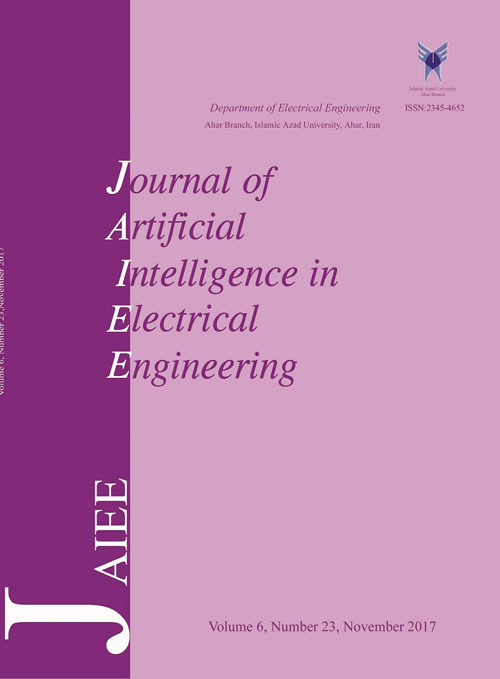فهرست مطالب

Journal of Artificial Intelligence in Electrical Engineering
Volume:6 Issue: 23, Autumn 2017
- تاریخ انتشار: 1396/08/10
- تعداد عناوین: 4
-
Pages 1-6Electric motors that have found wide application in various sectors of industry Have unique features such as high reliability, high efficiency, quick acceleration and have small sizes. Brushless DC motors meet these requirements well. In this study, the design of a brushless DC motor speed limits for the particular application at 1800 rpm that can be equivalent to 140 watts output was provided.Aims to increase the power density, efficiency and reduce engine weight by using the finite element method. according to the analysis of the existing motors and parameter extraction, comparing them with software for high electromagnetic torque and low weight , in this article we have focused on the permanent magnet by testing with different types of magnets and comparing the results of finite element analysis. The existing magnets made of ceramics with the lowest density , but the permanent magnet in software method has the highest energy density.Keywords: brushless DC motors, Optimization, Finite Element Method, new structure
-
Pages 7-17The face Detection methodsis used in order to provide security. The mentioned methods problems are that it cannot be categorized because of the great differences and varieties in the face of individuals. In this paper, face Detection methods has been presented for overcoming upon these problems based on skin color datum. The researcher gathered a face database of 30 individuals consisting of over 450 facial images to test fully automated face detection without verification, fully automated face detection with verification, manual face detection and automated face recognition, fully automated face detection and recognition and pose invariant face recognition. Successful results were obtained for automated face detection and for automated face recognition under robust conditions. In presented method, Scratch using Gaussian filter and morphology processing of the face areawould be selected and more complex neural network has been trained with over 200 images and totally, Three different sets of various images have been studied in terms of appearance number and lighting and quality. The experimental results showed the reliability of this method. In fact, by offering face recognition algorithm with color by artificial neural network is able to identify different types of faces. The accurateness of the proposed method would be more than 95 percent.Keywords: artificial neural network, face detection, skin color, Gaussian filter
-
Pages 19-25In this design an optical ring resonator are embedded between two Horizontal input and output waveguides which has 4 orbitals around the center of the resonator so that each orbital consists of 8 rods with different size in which radius of larger orbitals rods are bigger than radius of smaller orbitals rods. The analysis of simulation results showed the proposed filter has the transmission efficiency 100% at the resonance wavelength of 1550 nm, bandwidth and quality factor are 0.2 and 7753 respectively which proves it is a suitable filter for optical communication applications. Ultra-low bandwidth and high transmission efficiency are the most important advantages of the proposed filter in this study.Keywords: Photonic Crystal, Channel Drop Filter, Bandwidth, Quality Factor
-
Pages 27-32Infrared detectors can be used for a variety of applications such as: using in fiber-optic communications. Conventional technology for IR detectors is using p-i-n structure based on GaAs compound. This paper reports on the design and modeling of an IR detector using a p-i-n GaAs structure. Comsol software is used to simulate the model and the detector is discussed for terminal current, dopant profile, and energy band diagram. Finally, we have studied electric field according to layer depth under thickness, bias voltage, and field magnitude. we analyzed the electronic and optic behavior of IR detectors simultaneously and detection spectrum was obtained in terms of wavelength.Keywords: fiber-optic, SIFT, IR detectors, Optical Comsol PIN Structure

